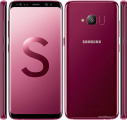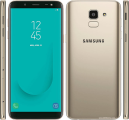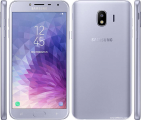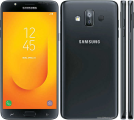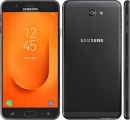
Samsung Galaxy S9 Plus 128 GB Prices
Important Note.
- All prices are in Pakistani Rupee (PKR)
- Prices may vary at stores and our effort will be to provide you with the updated prices.
- The latest price of Samsung Galaxy S9 Plus 128 GB was obtained on 17 مئی, 2019. The prices at the original stores had been updated on the respective mentioned dates.
- Find out WhatMobile price has dropped in Pakistan by selecting Notify Price Drop button
- Find out WhatMobile has better specifications by clicking Add To Compare Button find out what Mobile has better reviews by visiting our reviews section
- Find out WhatMobile is cheaper on which retailer by clicking Compare prices from retailers button
Search Terms
- Samsung Galaxy S9 Plus 128 GB
Specifications
| GENERAL | |
| 2G Network | GSM 850 / 900 / 1800 / 1900 - SIM 1 & SIM 2 (dual-SIM model only) |
|---|---|
| 3G Network | HSDPA 850 / 900 / 1700(AWS) / 1900 / 2100 |
| 4G Network | LTE |
| Sim | Single SIM (Nano-SIM) or Hybrid Dual SIM (Nano-SIM, dual stand-by) - Samsung Pay (Visa, MasterCard certified) - IP68 certified - dust/water proof over 1.5 meter and 30 minutes |
| Status | Rumored |
| BODY | |
| Dimensions | - |
| Weight | - |
| DISPLAY | |
| Display Size | 6.2 inches, 97.6 cm2 |
| Resolution | 1440 x 2960 pixels, 18.5:9 ratio (~531 ppi density) |
| MultiTouch | Yes |
| Protection | Corning Gorilla Glass 5 - 3D Touch (home button only) - Always-on display |
| SOUND | |
| AlertTypes | Vibration; MP3, WAV ringtones |
| LoudSpeaker | Yes |
| 3.5mm jack | Yes - 32-bit/384kHz audio - Active noise cancellation with dedicated mic |
| MEMORY | |
| CardSlot | microSD, up to 256 GB (uses SIM 2 slot) - dual SIM model only |
| Internal | 128 GB, 6 GB RAM or 64 GB, 4 GB RAM |
| DATA | |
| GPRS | Yes |
| EDGE | Yes |
| Speed | HSPA 42.2/5.76 Mbps, LTE-A (4CA) Cat16 1024/150 Mbps |
| WLAN | Wi-Fi 802.11 a/b/g/n/ac, dual-band, Wi-Fi Direct, hotspot |
| Blue Tooth | 5.0, A2DP, LE, aptX |
| NFC | Yes |
| USB | 3.1, Type-C 1.0 reversible connector |
| CAMERA | |
| Camera Primary | Dual: 12 MP (f/1.6, 26mm, 1/2.55", 1.4 µm, Dual Pixel PDAF) + 12MP (f/2.4, 52mm, 1/3.6", 1 µm, AF), OIS, phase detection autofocus, 2x optical zoom, LED flash |
| Camera Features | Geo-tagging, simultaneous 4K video and 9MP image recording, touch focus, face/smile detection, Auto HDR, panorama |
| CameraVideo | 2160p@30fps, 1080p@60fps, HDR, dual-video rec. |
| CameraSecondary | 8 MP, f/1.6, autofocus, 1440p, dual video call, Auto HDR |
| FEATURES | |
| Processor Cores | Octa-Core |
| OS | Android 8.0 (Oreo) |
| CPU | Octa-core |
| Sensors | Iris scanner, fingerprint (rear-mounted), accelerometer, gyro, proximity, compass, barometer, heart rate, SpO2 |
| Messaging | SMS(threaded view), MMS, Email, Push Mail, IM |
| Browser | HTML5 |
| Radio | No |
| GPS | Yes, with A-GPS, GLONASS, BDS, GALILEO |
| Java | No |
| Colors | Various |
| Others | - Samsung DeX (desktop experience support) - Fast battery charging - Qi wireless charging - ANT+ support - Bixby natural language commands and dictation - MP4/DivX/XviD/H.265 player - MP3/WAV/eAAC+/FLAC player - Photo/video editor - Document editor |
| BATTERY | |
| Battery | Non-removable Li-Ion battery |
| MISC | |
Reviews
28/02/2018 - 3:14pm

You may have heard; Samsung has now launched the Galaxy S9 series at one of its "Unpacked" branded events at MWC 2018 in Barcelona, Spain. The new flagship generation for 2018 has some nifty new specs and features, though it isn't very different from the last gen on the outside. All of that pretty much fits with the pre-launch rumour trail, however.
Naturally, people are going to be wondering just how 2017's Galaxy S8 series compares to the brand spanking new model, and, thankfully making our lives a heck of a lot easier, Samsung itself has published this rather handy infographic pitching the new kit against its predecessor spec-for-spec.

Right, so let's break that down a bit shall we?
Samsung Galaxy S8/S8+ vs Samsung Galaxy S9/S9+: Design & Display
As you can see from Samsung's illustration at the top there, the design and display aspects are where things have changed least from the last-gen. Sure, looking at the dimensions, Samsung has tweaked things a little, but only by mere millimetres; allegedly the size of the screen bezels has also changed, but as with the bodywork generally, it's by such miniscule measurements that unless you whip out some calipers you're not going to notice. Don't let that image with the Galaxy S9 having a picture with a black background fool you about the display size either.
All four models use the same IP68 water and dust resistance.
The biggest change is on the rear panel. Samsung got a lot of flak for putting the Galaxy S8 fingerprint scanner adjacent to the camera sensor rather than below it. With the Galaxy S9, it has fixed this and placed the scanner centrally, making it easier to use all round.
You can also see that the display sizes and specs have not changed one iota from the Galaxy S8 series. Samsung alleges it has improved black depth and contrast on the Galaxy S9 series, but until we see it in person we can't verify if it's noteworthy or not.
Assuming there's either no change, or simply not much, however, it isn't really a negative in our view as Samsung already far and away leads the pack on display technology, and it's hard in many respects to see what they can improve.
Samsung Galaxy S8/S8+ vs Samsung Galaxy S9/S9+: Camera
This is the biggest advancement for the new models, and also the area where not only does the Galaxy S9 series as a whole differ from the Galaxy S8 series, but also where the Galaxy S9+ distinguishes itself from the regular-sized Galaxy S9. Having said that, all four models from both ranges have 12MP sensors for the primary camera, and 8MP for the secondary. But drilling down into the details is where things start to add up.
To start with, both Galaxy S9 and Galaxy S9+ are offering a world first for phone cameras with a variable aperture; users can switch between f/1.5 and f/2.4 for the primary camera, giving you much finer control over image quality. The f/1.5 peak aperture setting is a wider setup than the Galaxy S8 series f/1.7 setup, so should improve image quality noticably; not that f/1.7 is anything to sneeze, however. On both the Galaxy S8 series and Galaxy S9 series, the whole package comes with optical image stabilisation (OIS) and excellent dual-pixel phase-detection autofocus for rapid, sharp capture with minimal noise.
The Galaxy S9+ adds a second 12MP f/2.4 aperture sensor to the primary array for a dual-sensor setup, with OIS and dual-pixel phase-detection autofocus for both lenses. It retains the variable aperture on the main wide-angle lens, while the second sensor has a fixed aperture but is a telephoto lens.
All the phones use the same 8MP f/1.7 front-facing selfie camera with autofocus - AF still being a relative rarity on selfie cams, despite its obvious benefits.
Samsung Galaxy S8/S8+ vs Samsung Galaxy S9/S9+: Hardware
Naturally, with a new generation comes a new processor suite.
As usual with Samsung, what you get inside the engine bay is dependent on region. The "International" variants of both the Galaxy S8 models and both the Galaxy S9 models are based on Samsung's own Exynos processors. North America (US & Canada) and China get a slightly different take with Qualcomm Snapdragon CPUs.
For the Galaxy S8 and Galaxy S8+ that's the Exynos 8895 CPU with a Mali-G71 MP20 GPU for the International model, or a Qualcomm Snapdragon 835 MSM8998 with an Adreno 540 GPU for the North American & Chinese models.
With the Galaxy S9 series, we're updated to the Exynos 9810 with a Mali-G72 MP18 GPU, and the Qualcomm Snapdragon 845 MSM8998 with an Adreno 630 GPU, for the respective regions.
Both last-gen and new-gen for both the Exynos and Qualcomm Snapdragon chips are 64-bit and based on 10nm semiconductor architecture, however, the newer phase is known as 10nm LPP (Low Power Plus) and has both performance and power effiency improvements. As you can see from the infographic, both newer chips also have increased clock-speeds on their core clusters too.
With RAM things get a bit more interesting. ALL of the Galaxy S8 models run 4GB of RAM, and so does the Galaxy S9, however, the Galaxy S9+ has 6GB of RAM to play with, which should give a noticable boost regardless of which CPU it is running.
On internal storage, the Galaxy S8 series only came in one flavour; 64GB, with support for microSD cards up to 256GB. On the Galaxy S9 series, both models come with microSD support up to 400GB and come in 64GB and 128GB internal storage models. There is also a 256GB internal storage model, but it is limited by region for availability, and we are not expecting it to show its face in Europe/UK.
While the Galaxy S8 series has both an iris scanner and face scanner (as well as the fingerprint scanner), the Galaxy S9 series has all this but adds something called Intelligent Scan, which is designed to combine biometric data from face and iris scanning simultaneously for a more accurate and more secure setup.
Both Galaxy S8 and Galaxy S9 series' have exactly the same battery setup, with 3,000mAh cells for the regular models, and 3,500mAh on the Galaxy S8+ and Galaxy S9+. All are non-removable.
Lastly, the Galaxy S9 series has an advantage for audiophiles, with both its headphones and stereo speakers being tuned by AKG audio, and supporting Dolby Atmos surround sound.
Write Your Own Review
My Recent Reviews
- Be first to post review for this product.
comments powered by Disqus




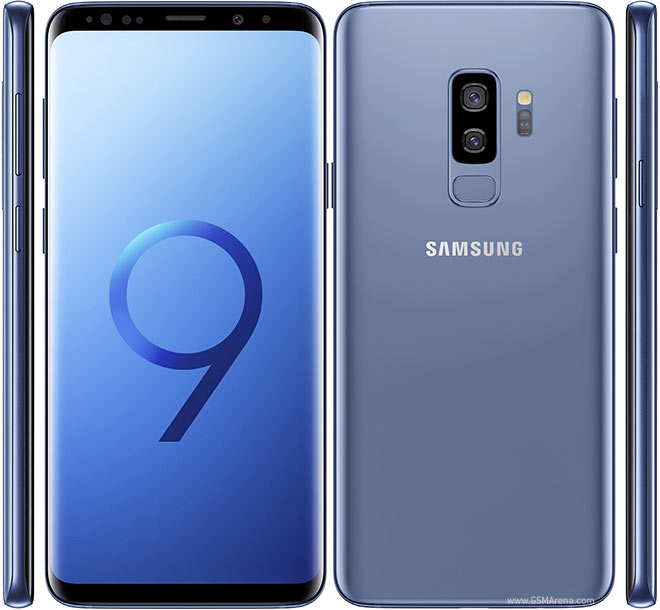
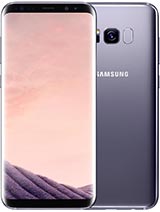

-32-GB.jpg)
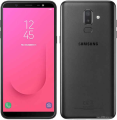
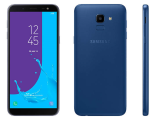
.jpg)
